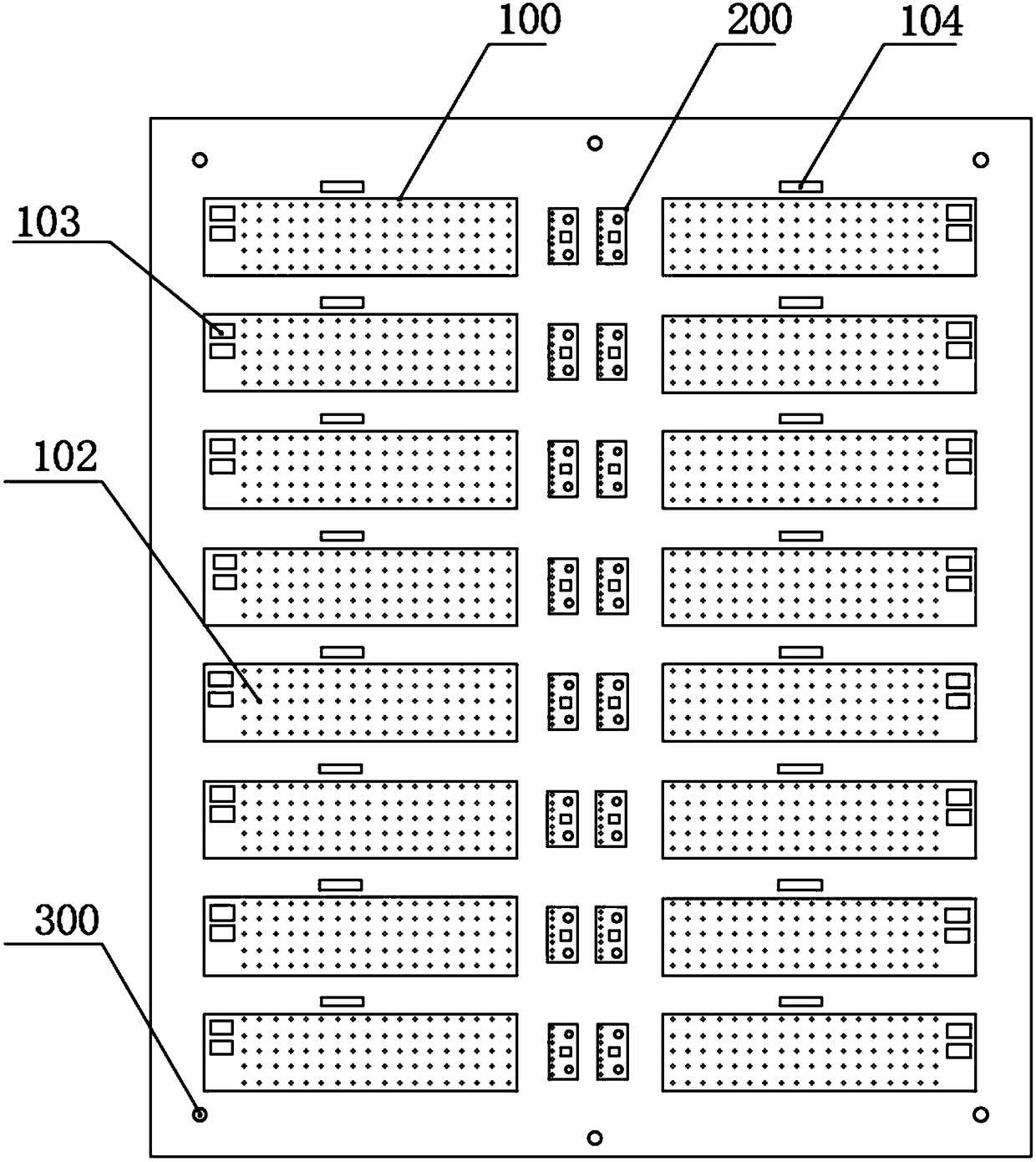Reliability evaluation multilayer circuit board
A multi-layer circuit and reliability technology, applied in the direction of printed circuit, printed circuit, printed circuit manufacturing, etc., can solve the problems of inability to test and judge product reliability, affect product performance, and lack of uniformity, and achieve low manufacturing cost, Capacity mastery, obvious effect
- Summary
- Abstract
- Description
- Claims
- Application Information
AI Technical Summary
Problems solved by technology
Method used
Image
Examples
Embodiment Construction
[0021] The specific embodiment of the present invention will be further described in detail below in conjunction with the accompanying drawings.
[0022] It should be noted that, in the following specific embodiments, when describing the embodiments of the present invention in detail, in order to clearly show the structure of the present invention for the convenience of description, the structures in the drawings are not drawn according to the general scale, and are drawn Partial magnification, deformation and simplification are included, therefore, it should be avoided to be interpreted as a limitation of the present invention.
[0023] The more important reliability evaluation includes the material test of the circuit board base material, the circuit reliability and mechanical performance reliability of the processed circuit board in extreme environments, etc. The circuit board base material and the circuit board processing parameters match each other, The reliability of the...
PUM
 Login to View More
Login to View More Abstract
Description
Claims
Application Information
 Login to View More
Login to View More - R&D
- Intellectual Property
- Life Sciences
- Materials
- Tech Scout
- Unparalleled Data Quality
- Higher Quality Content
- 60% Fewer Hallucinations
Browse by: Latest US Patents, China's latest patents, Technical Efficacy Thesaurus, Application Domain, Technology Topic, Popular Technical Reports.
© 2025 PatSnap. All rights reserved.Legal|Privacy policy|Modern Slavery Act Transparency Statement|Sitemap|About US| Contact US: help@patsnap.com



